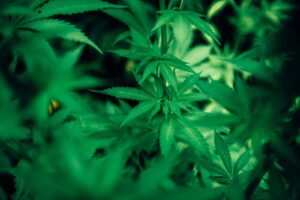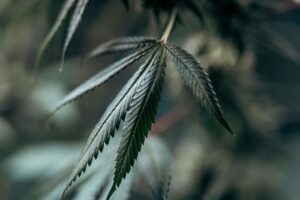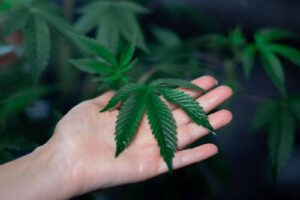Are you struggling to get the best yield from your cannabis plants? Lighting is one of the most crucial factors in cannabis cultivation, influencing everything from germination to the final harvest. Choosing the right lighting setup and schedule can mean the difference between a thriving, high-yielding plant and one that struggles to grow.
In cannabis cultivation, light fuels photosynthesis and regulates plant growth stages, from seedlings to flowering. Understanding how different light spectrums, intensities, and cycles impact plant development is essential for maximizing yield and potency. Advances in LED technology have revolutionized indoor growing, offering energy-efficient solutions that mimic natural sunlight.
This article explores the role of light in cannabis cultivation, breaking down its effects during different growth stages. You’ll learn how to optimize light cycles, the importance of darkness, and the advantages of using LED technology to maximize efficiency and yield.
Understanding Cannabis Light Cycles
Cannabis plants have distinct light requirements depending on their growth stage. The duration, intensity, and consistency of light exposure play a crucial role in shaping plant health, influencing everything from root strength to bud density. Understanding these factors ensures healthier plants, higher yields, and more potent final products. Here’s why light cycles matter in cannabis production:
- Light as a Growth Trigger: The amount of light a plant receives influences its biological processes, from root formation to bud production.
- Growth Stages and Light:
- Seedling Stage: 24/0 or 20/4 light cycle; moderate-intensity light to encourage root and foliage growth.
- Vegetative Stage: 18/6 or 20/4 light cycle; stronger light to promote leafy, bushy growth.
- Flowering Stage: 12/12 light cycle; uninterrupted darkness to trigger and maintain bud production.
- Yield and Quality: Fine-tuning your cannabis lighting chart helps maximize the plant’s potential, leading to higher yields and better-quality buds.
- Photoperiod Sensitivity: Cannabis plants respond to light exposure, meaning their biological clock can be controlled to regulate growth phases effectively.
- Preventing Light Burn: Overexposure or inconsistent light patterns can stress plants, reducing yields and affecting bud quality.
- Energy Efficiency: Using the right light duration for each stage ensures healthy plants while conserving energy, especially for indoor growers.
- Tailored Spectrums: Different light spectrums (blue for vegetative growth, red for flowering) optimize plant development, making it essential to adjust lighting setups accordingly.
Now, let us understand the cannabis vegetative and flowering stages and their lighting requirements in detail below.
Lighting Requirements for the Vegetative Stage
Once seedlings establish themselves, they enter the vegetative stage, where rapid growth occurs. At this point, plants need at least 18 hours of light per day to continue producing leaves and stems. The most common light cycle for this stage is 18/6 (18 hours of light, 6 hours of darkness), as it mimics long summer days. Some growers extend the light cycle to 20/4 or even 24/0 to speed up vegetative growth.
Key Requirements for the Vegetative Stage
- Light Duration: Providing 18-24 hours of light ensures optimal vegetative growth. More light exposure leads to faster development of leaves and stems.
- Light Spectrum Adjustments: During the vegetative stage, cannabis thrives under blue-dominant light (4000K-6500K) with wavelengths in the 450-500 nm range. This spectrum promotes strong root development, compact growth, and lush foliage. Using a balanced mix of blue and red light ensures healthy pre-flowering development and prepares plants for optimal bud production in later stages.
- Temperature and Humidity:
- Maintain temperatures between 70-85°F (21-29°C).
- Humidity should be kept around 40-70%, with higher humidity levels beneficial for younger plants.
- Airflow and Ventilation: Good air circulation strengthens stems and prevents mold. Using oscillating fans and ventilation systems helps maintain an ideal environment.
- Nutrient Uptake: Since plants grow vigorously in this stage, they require higher amounts of nitrogen-rich fertilizers to support foliage expansion.
Best Practices for Maximizing Growth
- Pruning and Training: Techniques such as low-stress training (LST), topping, and supercropping encourage lateral growth and increase future bud sites. Regular pruning removes unnecessary fan leaves, improving light penetration and airflow.
- Light Distance: Keep grow lights 18-24 inches away from the plant canopy to prevent light burn while ensuring adequate exposure. Adjust as plants grow to maintain optimal light absorption.
- Monitoring Growth Patterns: Tracking plant height, internodal spacing, and leaf development helps determine whether light or nutrient adjustments are needed for balanced growth. PlanaCan enhances monitoring by generating detailed harvest reports tracking cultivation decisions and their impact on yield. With all your data in one place, you can analyze trends, refine techniques, and continuously improve your results.
- Using a Cannabis Light Cycle Chart: Helps maintain consistency and avoid unwanted stress that could trigger early flowering. Keeping a log of light schedules and plant responses can aid in optimizing future growth.
- CO2 Supplementation: Introducing controlled CO2 levels in indoor grows enhances photosynthesis and promotes faster vegetative growth.
- Soil and Medium Optimization: Ensuring proper drainage and aeration in the growing medium prevents root rot and encourages nutrient uptake.
- Hydration and Nutrient Balance: Overwatering or underfeeding can hinder growth. During this phase, a balanced watering schedule and high-nitrogen nutrients maximize development.
Keeping nights short is critical during this phase. Too much darkness can trigger premature flowering, which is not ideal when plants need to build size before producing buds. By maintaining an optimized light schedule for cannabis, you can ensure plants stay in the vegetative phase until they are ready to transition into flowering.
Lighting Requirements for the Flowering Stage
Cannabis plants produce buds during the flowering stage, and lighting changes play a major role. To initiate flowering, plants must receive 12 hours of light and 12 hours of uninterrupted darkness (a 12/12 light cycle). This shift mimics the natural progression from summer to fall, signaling plants to stop vegetative growth and start producing flowers.
Key Requirements for the Flowering Stage:
- Strict Light Schedule: Maintaining a consistent 12/12 schedule ensures plants stay in the flowering phase and develop buds properly.
- Uninterrupted Darkness: Even a brief exposure to light during the dark period can cause stress, leading to delays in flowering or hermaphroditism.
- Light Spectrum Adjustments: Using lights with higher red wavelengths (2700K-3000K) encourages bud formation and resin production by stimulating hormonal responses. Red light plays a key role in activating phytochrome, a plant hormone that regulates flowering. This spectrum mimics the natural sunlight of late summer and fall, signaling plants to shift energy toward bud development, boosting both yield and potency.
- Temperature and Humidity Control:
- Keep temperatures between 65-80°F (18-27°C).
- Maintain relative humidity around 40-50% to prevent mold and bud rot.
- Air Circulation and CO2: Increased airflow strengthens plant structure and enhances bud density. Some growers supplement with CO2 enrichment to maximize yields.
Best Practices for Indoor and Outdoor Growers:
For Indoor Growers
- Use light timers to maintain a consistent 12/12 cycle, ensuring plants receive uninterrupted light and darkness for proper flowering. Any disruptions can cause stress and lead to hermaphroditism.
- Seal grow spaces with blackout materials, such as heavy-duty tarps or weather stripping, to prevent light leaks. Even small interruptions can interfere with flowering.
- As flowering progresses, gradually lower humidity to prevent mold and bud rot. Start at 50-60% relative humidity and reduce to 40-45% before harvest. Use dehumidifiers and proper ventilation to maintain levels.
- Good airflow is essential for plant health and odor control. Use exhaust fans and carbon filters to remove stale air and heat while reducing odors. Position oscillating fans to strengthen stems without drying out buds.
- Adjust light intensity throughout the growth cycle to match plant needs. Dimmable LED or HID lighting prevents stress from sudden changes, supporting steady growth and higher yields.
- Maximize bud production with SCROG (Screen of Green) or trellising techniques. These methods distribute light evenly, encourage horizontal growth, and support heavy buds, preventing branches from snapping.
For Outdoor Growers
- Place plants where they naturally receive changing daylight hours to support proper growth cycles. Avoid obstructions like buildings or trees that could limit light exposure.
- Blackout tarps or light-blocking structures can help manipulate flowering times by controlling light exposure. Ensure complete darkness during the dark cycle to prevent stress or delayed flowering.
- Sudden temperature changes, extreme humidity, and strong winds can affect plant health. Check forecasts regularly and adjust watering, add insulation, or use windbreaks as needed. With PlanaCan, you can track environmental conditions, generate harvest reports, and analyze past data to refine your approach and improve yields.
- Excess rain can cause mold and root rot, while frost damages plants. Use greenhouses, row covers, or frost cloths to shield plants and maintain stable conditions.
- Waterlogged soil can lead to root disease. Grow in well-draining soil, amend with perlite or compost, and elevate container plants to prevent standing water.
- Mulching with straw, wood chips, or dried leaves helps retain moisture, regulate temperature, and prevent weed growth. As it decomposes, it also enriches the soil with nutrients.
Total darkness during the 12-hour dark period is crucial indoors, as light leaks can delay flowering or cause stress like hermaphroditism. Outdoor plants adjust naturally as daylight decreases with the seasons.
Here is a brief table showing the different light requirements and much-needed adjustments for the vegetative and flowering stages of cannabis.
Growth Stage | Light Schedule | Key Requirements |
Vegetative Stage | 18/6 or 20/4 | – Temperature: 70-85°F (21-29°C) – Humidity: 40-70% – Stronger light intensity (Full-spectrum LEDs) – Good air circulation to prevent mold |
Flowering Stage | 12/12 (strict) | – Temperature: 65-80°F (18-27°C) – Humidity: 40-50% – Red light spectrum (2700K-3000K) for bud development – Strict darkness periods to prevent stress |
So, why is darkness important in the production of cannabis?
Importance of Darkness in Cannabis
Darkness is just as essential as light in cannabis cultivation. During the dark period, plants redirect their energy toward bud formation, root development, and crucial metabolic processes contributing to overall health. This phase allows the plant to balance its growth, ensuring that nutrients and energy are effectively utilized for producing high-quality buds. Here’s why complete darkness matters:
- Triggers Flowering: Cannabis plants rely on uninterrupted darkness to initiate and maintain the flowering stage. Any exposure to light during this period can disrupt hormonal changes, delaying bud production.
- Prevents Stress and Hermaphroditism: Inconsistent dark periods cause stress, which may result in plants developing both male and female reproductive organs, reducing overall yield quality.
- Enhances Bud Development: Plants struggle to convert stored energy into essential compounds that enhance potency and flavor without darkness.
- Regulates Growth Hormones: Just as humans need rest, plants use darkness to regulate their internal processes, ensuring they remain strong and resilient.
- Encourages Root Growth: During dark periods, cannabis plants focus on root expansion, which is crucial for water and nutrient uptake and leads to stronger overall development.
- Boosts Terpene and Cannabinoid Production: Proper dark cycles help maximize the production of terpenes and cannabinoids, which contribute to the aroma, flavor, and effects of cannabis.
- Prevents Light Pollution Issues: Even minor interruptions in darkness can cause delays in flowering and reduced potency. Maintaining strict dark periods avoids this risk.
Now, let us discuss the lighting and technology used to produce cannabis plants to ensure higher yields.
LED Lighting and Technology In Cannabis
LED lighting has become the go-to choice for many cannabis growers due to its efficiency, adaptability, and ability to mimic natural sunlight. These lights provide a full spectrum of light, essential for both the vegetative and flowering stages, ensuring optimal plant growth. Here are some of the LED lighting and related technologies below:
- Full-Spectrum LEDs: Provide the complete range of wavelengths needed for all stages of growth, eliminating the need for multiple lighting types.
- Adjustable Light Intensity: Advanced LEDs allow you to modify intensity levels, ensuring plants receive the right amount of light at each stage.
- Dimmable Features: LED systems with dimmable controls help prevent light stress and allow for gradual transitions between growth phases.
- Targeted Spectrum Control: Customizing the red-to-blue ratio in LEDs can optimize vegetative growth and enhance flowering, improving both yield and potency.
- Automated Scheduling: Many LED setups have programmable timers, ensuring precise light cycles without manual adjustments.
- Passive Cooling Systems: High-quality LEDs include passive cooling mechanisms to prevent overheating and maintain optimal temperatures for plant growth.
- Directional Light Distribution: LEDs focus light directly on plants, reducing wasted energy and improving efficiency compared to traditional lighting systems.
- Low Heat Emission: Unlike HID lights, LEDs generate minimal heat, reducing the need for additional cooling equipment and lowering overall energy costs.
Now, let us discuss some of the light deprivation techniques used in the production of cannabis.
Light Deprivation Techniques In Cannabis
Light deprivation techniques give you precise control over flowering times, particularly in greenhouse environments. You can manipulate the plant’s growth cycle by strategically restricting light exposure to fit your schedule and maximize yields. These methods enable you to dictate when flowering begins, regardless of natural light conditions, leading to more predictable and efficient harvests. Here are some of the techniques below:
- Use Blackout Curtains or Covers: These block external light, ensuring plants receive a strict photoperiod.
- Automate Light Control: Timed shading systems help regulate light cycles without constant monitoring.
- Force plants to flower earlier: This allows for multiple harvests in a single season, maximizing yield potential.
- Extend the vegetative phase: Keeping plants in this phase longer promotes larger plants with higher yields before transitioning into flowering.
- Improve control over growth cycles: This technique helps synchronize harvests, making commercial production more efficient.
- Protect plants from seasonal variations: Controlling light exposure ensures that plants are not affected by natural daylight fluctuations, leading to consistent results.
- Enhance cannabinoid and terpene profiles: Properly managed light deprivation can improve the potency and flavor profiles of the final product.
Conclusion
Mastering the cannabis light cycle is one of the most effective ways to improve plant health and maximize yields. Each growth stage demands a specific light schedule, and fine-tuning these cycles can lead to better results. Whether you are using traditional lighting or advanced LED setups, paying attention to cannabis light requirements will help you cultivate stronger plants and achieve a successful harvest.
To improve cannabis cultivation efficiency, PlanaCan offers cutting-edge tools that streamline the growing process. It helps you define and automate cultivation tasks using customizable templates, covering everything from planting to harvest. This ensures consistency and efficiency, saving you time and effort.
It also provides a clear visual timeline, allowing you to plan months ahead while also managing daily tasks. Adjusting schedules and keeping track of important cultivation steps has never been easier. The centralized system ensures no task is overlooked, helping you stay on top of their operations.
By using PlanaCan’s innovative solutions, you can optimize your workflow, reduce manual workload, and focus on maximizing yield and quality. Schedule a free call today to see how PlanaCan can transform your cannabis cultivation process.




